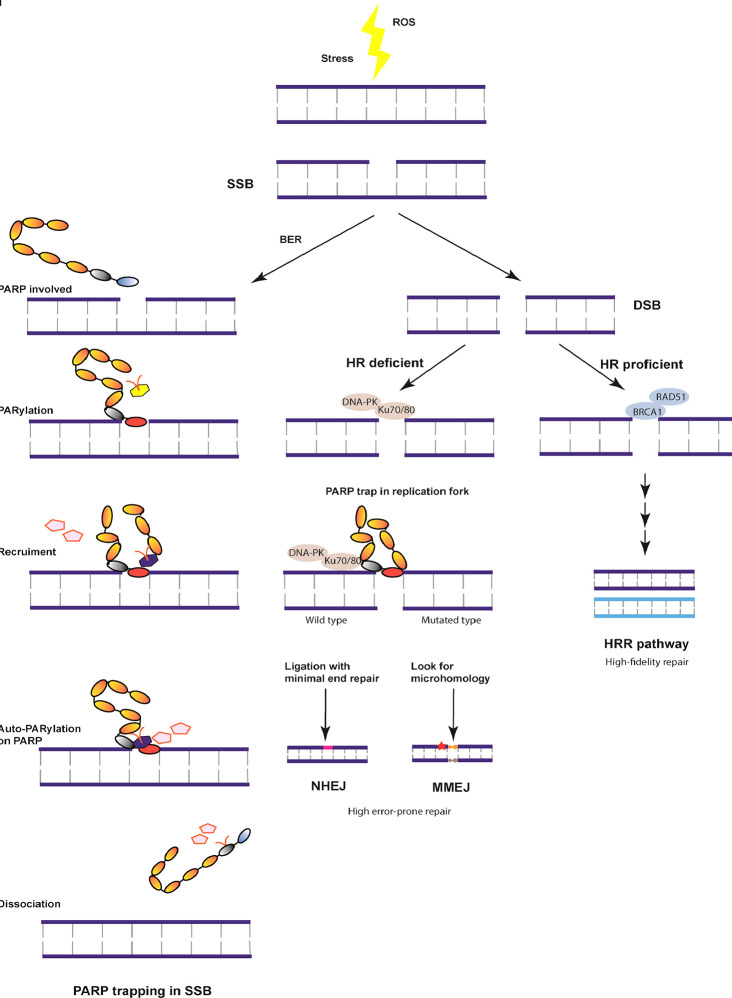Figure 1.
Overview of the DNA damage repair pathway. DNA damage is induced in the S/G2 phase due to stress or reactive oxygen species (ROS). The most stable DNA single-stranded break (SSB) is repaired with the help of base excision repair (BER) and BRCA by poly (ADP-ribose) polymerase (PARP) trapping and dissociation. Otherwise, DNA double strand break (DSB) is formed, which can be repaired by three independent pathways under different mechanisms. With homologous recombination (HR) proficient genes, DNA undergoes high fidelity repair at cell cycle checkpoints. In case of HR deficiency, the damaged chromatin ligation is mediated by minimal end repair or microhomology, both of which are unstable repair pathways resulting in cell death or tumor development.

